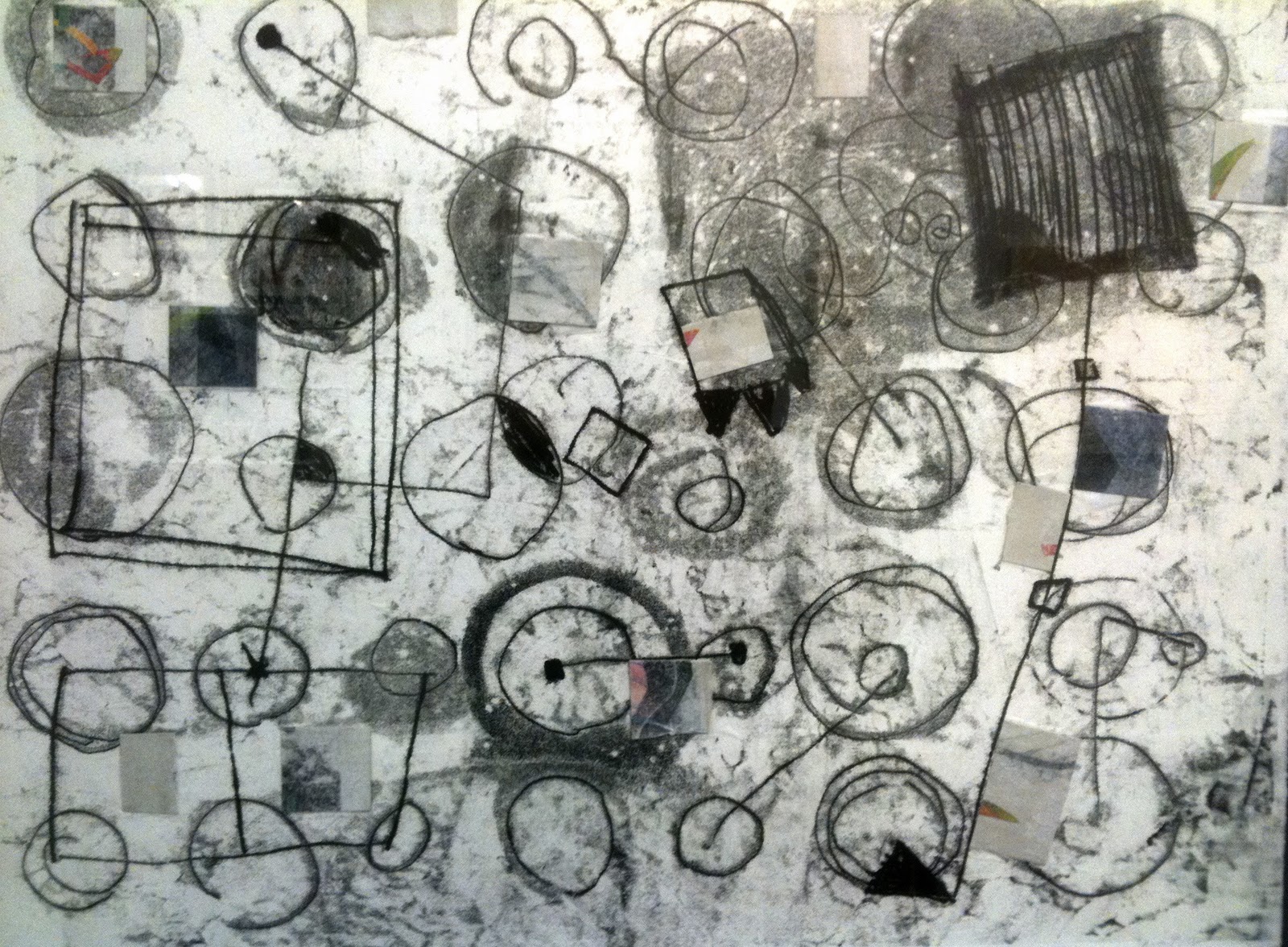Recently I’ve thought about the line between inspiration and influence and when influence can become confluence in art. I wanted to break it down even further so I could understand how these elements operate in my own art making practice.
Last week, I had the chance to explore the thread I call “confluence” following a workshop in botanical contact eco printing.
Examples of botanical eco printing on paper
I love the ethereal effects that I see in eco printing and wanted to see if I could use plant pigments in my own monoprints.
The workshop, led by artist Lotta Helleberg, was challenging and absorbing. Each day we explored the subtle combinations that plants and mordants (fixatives) can create. I tried to keep the various equations in neat columns in my mind’s eye.
My best work came when I threw up my hands and stuck to the basics.
Infinity scarf printed with prunus leaves on silk/wool blend
The question of inspiration, influence and confluence only truly emerged back in my studio. I work with plant materials, acrylic paints and a gel plate to create botanical monoprints. I wanted to carry over the watery influence of the eco dye baths; the way plants emboss themselves into the paper and leave tangible marks of their presence. I figured this would be easy.
After several printing sessions, I ended up with prints that were neither eco nor mono but a muddle.
Eco prints and monoprints converging
“What’s going on?” I wondered. “I know how to do this.” I was confused until I received an email from another student. She mentioned how stuck she was following the workshop.
The metaphor of two rivers joining rushed into my mind. When one river joins together with another, it’s called a confluence.
Many things happen when two or three volumes of water with different temperatures, speed and density merge. It’s a messy affair.
The same thing happens when we take part in classes or workshops. The nature of a workshop is immersion; in technique, artwork and the work of other artists. That’s confluence. Once back home, it’s confusing. What’s us? What’s not ours? What marks, patterns or colors looked good but may or may not belong in our work?
Like two rivers converging, it takes time for new material to settle, to allow our unique voice to emerge, hopefully all the stronger for joining with others.
After all, when the Yangtze River absorbs the water from the Jialing, it becomes more powerful and runs for thousands of miles until it meets the South China Sea.
How about you? What’s your experience of confluence in your work?







